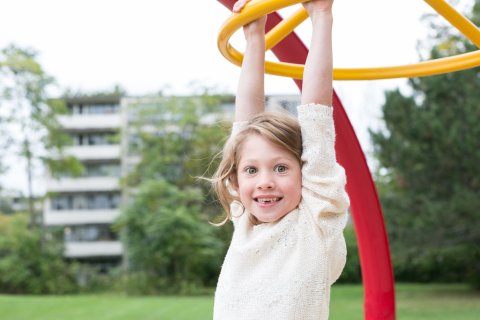You are here
Home ›Kids At The Gym

The health of our children is a direct reflection of our society, culture, education (or lack of it), our own efforts and their lifestyle, not genetics as many people claim (children born with congenital defects, learning disabilities or genetic anomalies excluded).
Epigenetics is the study of variation and change caused by external factors that switch genes on and off. In other words, we now know that environment and lifestyle determine the outcome of our health, body composition and performance more than any other factor(s), including the genes themselves.
Genes are the hardware; environment and lifestyle are the software. It is what we download into the brain through our senses (or don’t) that ultimately determines success or failure. You can't draw water from an empty well. It's called tabula rasa meaning we are born with an empty slate. Knowledge is acquired not inherent. It is also possible and more common than not, to be deceived as a child into thinking that what you think you know is truth, when it is clearly inconsistent with science and reason.
Without clean wholesome food and optimum amounts of essential micronutrients, young people become apathetic and lose enthusiasm. Toxic nutrition poisons children mentally and physically. Supplements of particular importance for children include the EFAs, essential vitamins and minerals, protein shakes and probiotics; to name a few.
Encourage children to go outside as much as possible. Try free range parenting. Up to age 3 or 4, the best activity is natural movement achieved through running, chasing, digging, climbing and playing at the park. Teach your child how to ride a bicycle. Introduce them to ice skating. Buy them a set of in-line skates or a foot scooter and if only for survival sake, teach them how to swim.

Dance lessons and gymnastics develop excellent coordination and emphasize stretching. Martial Arts have fine programs for children. As your son or daughter grows up and becomes stronger, expose them to a wide variety of sports. Not all kids get into organized sports, but all kids should move and eventually learn not only how to exercise correctly, but also why.
The best age to begin weight training is 5-7 years old, depending on the maturity, development and enthusiasm of the young person. That’s straight from the American College of Sports Medicine, provided they receive supervision and don’t train too long or too hard. This position is also shared by the Mayo Clinic, The American Academy of Pediatrics and the American College of Sports Medicine.
Dr. Avery Faigenbaum PhD University of Massachusetts, Boston, says research on 7-12 year olds indicates that preadolescents can increase their strength by 40% through performing an 8-12 week program of strength training. Such activity is of particular importance to females, who in later life are at greater risk of developing osteoporosis. The American College of Sports Medicine recommends that children who lift weights should be mindful of the following:
1) Get instruction and supervision from a qualified teacher
2) Always warm up and cool down
3) Get a medical exam first if there are known or suspected health problems
4) Do 1-3 sets of 6-15 reps, two to three times weekly on non-consecutive days
5) Avoid maximal lifting
6) Emphasize proper technique and safety, not weight
Before a teenager reaches adult maturity, there are two primary concerns with weight training. First, the bones of a young person are 2-5 times less dense than the bones of an adult, so heavy weight should be avoided.
Think of weights as light, medium and heavy. “Heavy” generally describes an amount of weight that can’t be lifted more than six times (reps) in one set.
Second, teenagers lack specialized anaerobic enzymes needed for muscle recovery after intense, hard workouts. Therefore, young people should train with less intensity and not push to “all out” maximum failure.
Contrary to conventional belief, weightlifting will not stunt a child’s growth, but rather, with proper instruction and education, support underlying organ and skeletal development, improve body function and strengthen heart and muscular health.
Weight training will also help kids to excel in sports at school, which is why I started weight training at age 12 and never looked back. That was 45 years ago and I’m still training routinely and injury free. Compared to many sports, such as hockey, football, lacrosse and soccer, resistance training at home or in the gym is statistically much safer provided it is performed correctly.
Overcoming training obstacles in the gym requires discipline, teaches patience and builds self-confidence, character traits young people need to develop. Every obstacle overcome in the gym can be transferred to real life situations.
Our thoughts must be directed towards a constructive and worthwhile end. As parents, we are responsible for the welfare of our children until they are ready to leave the nest and fend for themselves. We must therefore guide them with the utmost of care and understanding. Their lives, at least to some degree, are a testimony to our commitment and role model.
For every reason a child should stay active and keep fit, the same applies to parents and adults. What’s good for the gander is good for the goose. If a child grows up in an active, health-conscious environment guided by positive emotion, reason and foresight, it’s likely they’ll continue in that same vein.
I say likely, because as a father of three and a grandfather of four, I can tell you from my own experience, that there are no guarantees. With kids you hope for the best, and do your best to guide them towards the light. After that it’s all up to them.
Photo by Sarah Pflug from Burst
Grandson Max & Grandpa
As always, stay well and live free!
Dr.C
Related Articles
Kids Need Exercise Too
Hop, Skip and Jump Start Your Kids
- Log in to post comments